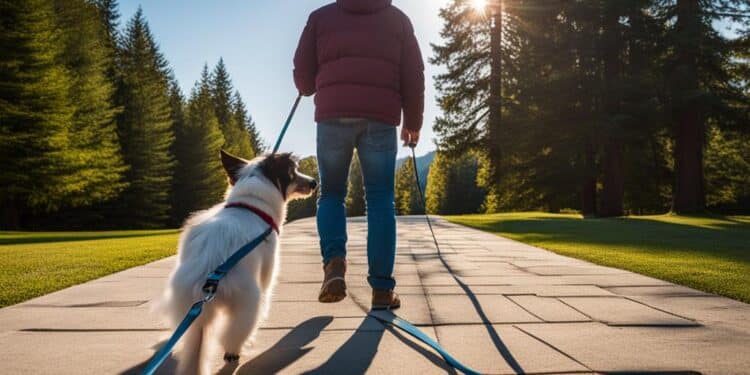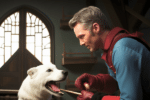Loose Leash Lessons: Managing Leash Reactivity in Dogs

Dealing with leash reactivity, leash aggression, desensitization, and reactive dog training are common challenges for dog owners. Leash reactivity refers to aggressive or reactive behavior exhibited by dogs when on a leash. This behavior can be triggered by fear, frustration, or negative experiences in the past.
For dog owners seeking a solution, desensitization and reactive dog training are effective techniques that can help manage and improve leash reactivity. Desensitization involves gradually exposing the dog to the trigger and rewarding calm behavior, while reactive dog training focuses on teaching alternative behaviors and promoting positive associations.
Recognizing the signs of leash reactivity and seeking professional help, if needed, is crucial for ensuring the safety of both the dog and the people around them. By implementing these strategies and working with a dog trainer or behaviorist, dog owners can transform their walks and help their dogs become more confident and comfortable in leash-related situations.
Strategies for Managing Leash Reactivity
Dealing with leash reactivity in dogs can be challenging, but there are effective strategies for managing this behavior. Two key techniques that can help are desensitization and reactive dog training.
Creating Distance and Desensitization
One strategy for managing leash reactivity is to create distance between the dog and the trigger. By giving the dog more space, they may feel less threatened and their reactive response may be reduced. Additionally, desensitization can be a powerful tool in changing the dog’s perception of the trigger.
Desensitization involves gradually exposing the dog to the trigger at a distance and then rewarding them for calm behavior. Over time, the dog learns that the trigger is not a threat and can become more comfortable in its presence. It’s important to start at a distance where the dog remains calm and gradually decrease the distance as they progress.
Reactive Dog Training
Reactive dog training focuses on teaching alternative behaviors to replace the reactive response. For example, teaching the dog to “look at me” or “sit” can redirect their attention and help them remain calm in triggering situations. Positive reinforcement is a key component of this training, as rewarding the dog for calm behavior reinforces the desired response.
Consistency and patience are crucial when implementing these strategies. It’s important to remember that overcoming leash reactivity takes time and effort. Working with a professional dog trainer or behaviorist can provide guidance and support tailored to your dog’s specific needs.
| Strategies | Benefits |
|---|---|
| Creating distance | Reduces likelihood of reactive response |
| Desensitization | Changes dog’s perception of trigger |
| Reactive dog training | Teaches alternative behaviors and promotes calm response |
By implementing these strategies and seeking professional help if needed, you can effectively manage leash reactivity in your dog and enjoy more relaxed walks together.
Conclusion
Dealing with leash reactivity can be challenging, but with the right strategies and techniques, managing leash reactivity is possible. Desensitization and reactive dog training have been proven effective in reducing leash reactivity and promoting calm behavior during walks.
Patience and consistency are key when working with a reactive dog. It takes time for them to learn new behaviors and overcome their reactive tendencies. Seeking professional help from a dog trainer or behaviorist can provide personalized guidance and support throughout the training process.
By implementing these strategies and investing time and effort into training, dog owners can transform their walks and help their dogs become more confident and comfortable in leash-related situations. Remember, managing leash reactivity is a journey that requires dedication, but the results are well worth it.
FAQ
What is leash reactivity in dogs?
Leash reactivity is a common behavioral issue in dogs where they exhibit aggressive or reactive behavior when on a leash.
What causes leash reactivity?
Leash reactivity can be caused by a variety of factors, including fear, frustration, or previous negative experiences.
How can I manage leash reactivity in my dog?
One effective strategy for managing leash reactivity is desensitization, which involves gradually exposing the dog to the trigger while rewarding calm behavior. Reactive dog training, which focuses on teaching alternative behaviors and promoting positive associations, can also be helpful in reducing leash reactivity.
What signs should I look for to identify leash reactivity in my dog?
Signs of leash reactivity may include lunging, barking, growling, or pulling on the leash when encountering triggers such as other dogs or people.
Should I seek professional help for managing leash reactivity?
It is important for dog owners to understand the signs of leash reactivity and seek professional help if needed to ensure the safety of both the dog and the people around them.
How can I create distance between my dog and the trigger to manage leash reactivity?
One strategy for managing leash reactivity is to create distance between the dog and the trigger. This can help the dog feel more comfortable and reduce the likelihood of a reactive response.
What is desensitization and how can it help with leash reactivity?
Desensitization involves exposing the dog to the trigger at a distance and gradually decreasing the distance over time. This allows the dog to learn that the trigger is not a threat. Positive reinforcement is a key component of desensitization, rewarding the dog for calm behavior and gradually increasing the difficulty of the exercises to develop a positive association with the trigger.
What is reactive dog training and how can it help with leash reactivity?
Reactive dog training focuses on teaching alternative behaviors, such as “look at me” or “sit,” that the dog can perform instead of reacting aggressively. This can redirect their attention and help them stay calm in triggering situations.
How long does it take to manage leash reactivity?
Consistency and patience are vital when dealing with leash reactivity. It takes time for the dog to learn new behaviors and overcome their reactive tendencies. Working with a professional dog trainer or behaviorist can provide guidance and support throughout the process.
Is it possible to improve a dog’s leash reactivity?
Yes, it is possible to manage and improve a dog’s leash reactivity with the right strategies. Desensitization and reactive dog training are effective techniques for reducing leash reactivity and promoting calm behavior during walks.
What should I do if I need help managing my dog’s leash reactivity?
It’s important for dog owners to be patient, consistent, and seek professional help if needed. Working with a dog trainer or behaviorist can provide personalized guidance and support.
How can managing leash reactivity improve my dog’s walks?
By implementing these strategies and investing time and effort into training, dog owners can transform their walks and help their dogs become more confident and comfortable in leash-related situations.





